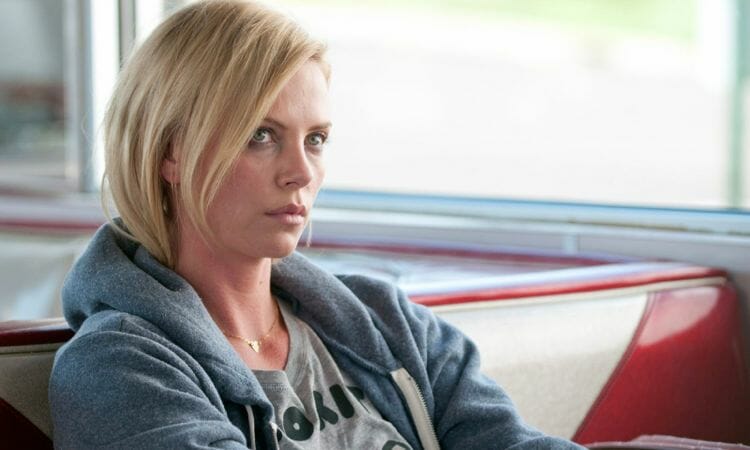By Eric Owusu · September 13, 2014

Charlize Theron’s character in Young Adult is an unconventional protagonist whose selfish actions make us cringe and cheer for her to get what she wants, even though she wants to be a homewrecker. Michelle Pfeiffer as a sultry yet diverged villainess/heroine in Tim Burton’s Batman Returns steals the show from the male hero, who just so happens to be the title character. And Faye Dunaway set the gold standard in film for antiheroes in general alongside Warren Beatty in 1967’s Bonnie and Clyde. She starred as a realist who wanted to be more than a waitress and we root for her and her accomplice as they rob banks and get their pictures plastered on walls, making them macabre celebrities. Female antiheroes are, unfortunately, scarce but they are compelling in movies, when writers put them front and center.
‘OK, female antiheroes exist. But how do I write one to lead the narrative of my script? There are few to imitate.’ I’m glad you asked. But the answer to that is simpler than you think.
All the great male antiheroes we know and love are, first and foremost, interesting. They don’t always have interesting jobs, like Robert De Niro’s disturbed character in Taxi Driver, but they are definitely memorable. They have several layers to them that make them conflicted, which every good screenplay should have anyway. A female antihero is no different.
Make your anti-heroine multidimensional. Give her an external conflict to go along with her internal conflicts. Give her distinct characteristics and a clear voice. Make her selfish, conniving, and ruthless, for example, all while exuding redeeming qualities like being charming or charitable. Have her show by doing, making decisions that advance the plot but also reveal things about her mentality. If she’s in a bad situation at work, show her handle problematic colleagues in an off-the-wall, unorthodox way. It’s fun to see the character we’re rooting for be bad and justified in doing so. It is also intriguing to see how an anti-heroine copes when the unexpected happens.
I once read that it’s fine to have random obstacles emerge that the protagonist has to deal with but it’s not OK to have the protagonist get out of it through sheer dumb luck. So in your screenplay, have your anti-heroine figure her way out of sticky situations that she doesn’t see coming. Moments that catch your unconventional heroine off guard can serve as perfect instances to show her true nature and how she handles things under pressure. If she all of a sudden can’t drive her own car but has to be somewhere in a hurry, have her step out into traffic and commandeer a car, as if she’s a cop. Make her be likeably naughty.
We like Michael Corleone in The Godfather I and II because he’s powerful and charming. Scarface’s Tony Montana is one of cinema’s favorite characters because he’s mercilessly driven, but funny. Antiheroes can be bad and do terrible things but they have to be likeable to have readers and viewers stay on their side. There must be some redeeming qualities to keep us on their side. Write your female antihero as someone with or gaining confidence throughout the screenplay. Confidence helps validate bad behavior. In a way, it’s pretty admirable. Have her do bad things and at least justify things to herself, or to people around her.
When Charlize Theron’s Mavis in Young Adult plans to take her ex-boyfriend away from his wife, we know that she believes she’s received a sign that they’re supposed to be together. Even though it doesn’t make rational sense to most people, we see that it makes sense to her and she’s determined to do it for her own happiness, no matter how selfish or mean it is. We want to see Mavis enjoy some success because she is a funny, honest, rude person, which works because she’s written in a way that shows us that she is also stunted and has hit a wall with her book and in her life. I honestly liked and sympathized with the character so much that I wanted to see her break up that “happy home,” despite the awkward moments and terrible things she said and did in her quest. But the same feelings arise in most of us when we watch an antihero go after their desires. As long as they are likeable and well written.
There are several statistics and studies on why there aren’t many female leads in Hollywood movies. Antiheroes aren’t very different. But it starts with the writers, who should put more female antiheroes in their screenplays. They are, a lot of the time, more interesting than male antiheroes, and just as relatable.